
The Enchanting Lofoten Archipelago
Discover the breathtaking beauty of Lofoten, Norway - an archipelago of dramatic landscapes, vibrant culture, and thrilling outdoor adventures.
Lofoten, a stunning archipelago in Norway, is a paradise for nature lovers and adventure seekers. With its dramatic landscapes, towering mountains, and pristine waters, Lofoten offers a unique blend of natural beauty and cultural heritage. The islands are renowned for their picturesque fishing villages, where red and white wooden houses dot the coastline, creating a charming and inviting atmosphere. Visitors to Lofoten can indulge in a variety of outdoor activities, from hiking and fishing to kayaking and surfing. The archipelago is also a fantastic destination for wildlife enthusiasts, with opportunities to see sea eagles, puffins, and whales. In the winter months, the Northern Lights paint the skies with mesmerizing colors, offering an unforgettable experience for those who venture here. Lofoten's rich history and culture are evident in its museums, galleries, and traditional festivals. The Viking Museum in Borg provides a fascinating glimpse into the region's past, while local art galleries showcase the vibrant creativity of contemporary artists. Culinary delights await, with fresh seafood being a highlight of the local cuisine. Whether you are seeking adventure, tranquility, or cultural exploration, Lofoten is a destination that promises to captivate and inspire.
Local tips in Lofoten
- Visit in summer for long daylight hours and milder weather.
- Winter is ideal for witnessing the Northern Lights.
- Book accommodations in advance, as options can fill up quickly.
- Rent a car to explore the islands at your own pace.
- Try the local seafood, especially the stockfish and cod.
- Pack layers, as weather can change rapidly.
- Respect local wildlife and follow guidelines to minimize impact.
The Enchanting Lofoten Archipelago
Lofoten, a stunning archipelago in Norway, is a paradise for nature lovers and adventure seekers. With its dramatic landscapes, towering mountains, and pristine waters, Lofoten offers a unique blend of natural beauty and cultural heritage. The islands are renowned for their picturesque fishing villages, where red and white wooden houses dot the coastline, creating a charming and inviting atmosphere. Visitors to Lofoten can indulge in a variety of outdoor activities, from hiking and fishing to kayaking and surfing. The archipelago is also a fantastic destination for wildlife enthusiasts, with opportunities to see sea eagles, puffins, and whales. In the winter months, the Northern Lights paint the skies with mesmerizing colors, offering an unforgettable experience for those who venture here. Lofoten's rich history and culture are evident in its museums, galleries, and traditional festivals. The Viking Museum in Borg provides a fascinating glimpse into the region's past, while local art galleries showcase the vibrant creativity of contemporary artists. Culinary delights await, with fresh seafood being a highlight of the local cuisine. Whether you are seeking adventure, tranquility, or cultural exploration, Lofoten is a destination that promises to captivate and inspire.
When is the best time to go to Lofoten?
Iconic landmarks you can’t miss
Lofoten War Memorial Museum
Discover the Lofoten War Memorial Museum, a compelling destination that unveils Norway's wartime history through engaging exhibits and stunning scenery.

Offersøykammen
Explore Offersøykammen, a breathtaking hiking destination in Leknes, Norway, offering stunning views and a memorable outdoor adventure.

Lofotodden Nasjonalpark
Experience the breathtaking beauty of Lofotodden National Park, where towering peaks meet serene lakes amidst Norway's stunning Lofoten Islands.

Olenilsøya kystfort
Explore the enchanting Olenilsøya Kystfort, where history meets breathtaking landscapes in scenic Reine, Norway.

Hamnoy Rorbu
Discover the enchanting Hamnoy Rorbu, a Norwegian fishing village full of breathtaking landscapes, rich traditions, and outdoor adventures in the Lofoten Islands.

Skulpturlandskap - Lauerbærblad
Discover the enchanting Skulpturlandskap - Lauerbærblad, where art and nature unite in a breathtaking outdoor experience on Moskenesøya, Norway.
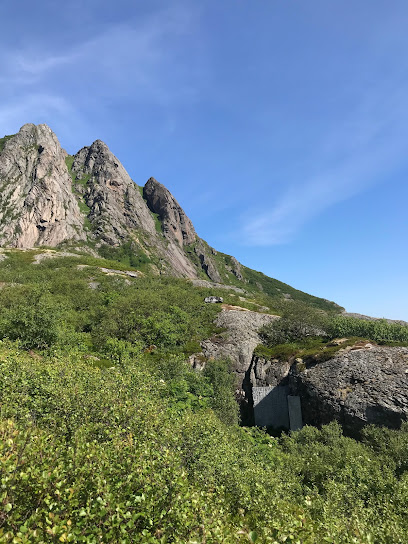
Flakstadøya View Point
Experience the stunning beauty of Flakstadøya View Point, a breathtaking destination in Norway's Lofoten Islands, perfect for nature lovers and photographers.

Unmissable attractions to see
Lofotr Viking Museum
Discover the Viking Age at Lofotr Viking Museum, featuring authentic experiences, engaging activities, and breathtaking natural beauty.

Uttakleiv strand
Experience the serene beauty of Uttakleiv Strand, a stunning beach in the Lofoten Islands, perfect for relaxation, adventure, and breathtaking views.

Lofotakvariet - The Lofoten Aquarium
Experience the magic of Norway's Arctic marine life at Lofotakvariet, the Lofoten Aquarium, where adventure meets education.

Norwegian Fishing Village Museum Å
Explore Norway's rich maritime heritage at the Norwegian Fishing Village Museum in Sørvågen, a unique destination for tourists seeking cultural insights.

Lofoten War Memorial Museum
Explore the Lofoten War Memorial Museum and uncover the rich history of World War II's impact on Norway's breathtaking Lofoten Islands.

Vik Beach
Experience the breathtaking beauty and serene tranquility of Vik Beach, a perfect destination for nature lovers and adventurers in Norway.

Festvågtind
Explore the majestic Festvågtind mountain in Norway, a hidden gem for hiking enthusiasts and nature lovers, offering breathtaking views and unforgettable experiences.

Nusfjord - Historical Fishing Village
Explore Nusfjord, a historical fishing village in Norway, where vibrant architecture meets stunning fjord views and rich maritime heritage.

Henningsvær Port Viewpoint
Discover unparalleled coastal views at Henningsvær Port Viewpoint, where nature's beauty and local charm intertwine in the heart of Lofoten Islands.

The Blacksmith at Sund
Experience the artistry of traditional blacksmithing at The Blacksmith at Sund in scenic Ramberg. A captivating museum celebrating Norway's rich craftsmanship.
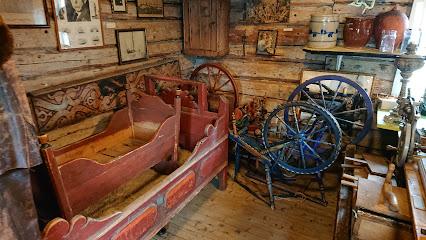
Lofotmuseet
Explore Lofotmuseet: A Journey Through the Maritime Heritage of the Lofoten Islands in Norway.

Offersøykammen
Discover the breathtaking beauty of Offersøykammen, a premier hiking destination in the Lofoten Islands, perfect for nature lovers and adventure seekers.

Lofotodden Nasjonalpark
Explore the breathtaking beauty of Lofotodden National Park, a natural paradise in Norway with stunning landscapes and rich wildlife.

Gallery Lofoten
Explore the artistic heart of the Lofoten Islands at Gallery Lofoten, where local culture and breathtaking landscapes come to life through art.

View point
Discover the breathtaking scenery of Å at this stunning viewpoint, where nature's beauty unfolds in panoramic views and unforgettable moments await.
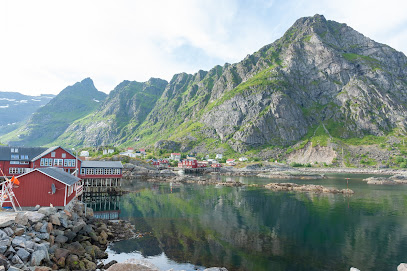
Essential places to dine
Nordis Restaurant Svolvær
Experience authentic Norwegian cuisine at Nordis Restaurant Svolvær - where local flavors meet stunning views.

Maren Anna
Experience authentic Norwegian cuisine with stunning waterfront views at Maren Anna in Sørvågen.
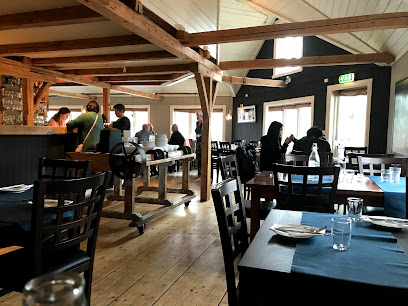
Tapperiet Bistro
Experience authentic Norwegian cuisine at Tapperiet Bistro in Reine, where local flavors meet stunning coastal views.

Ramberg Gjestegård
Experience traditional Norwegian cuisine amidst stunning landscapes at Ramberg Gjestegård in Lofoten Islands.

Restaurant Nihao Lofoten
Experience authentic Chinese flavors in Svolvær at Restaurant Nihao – where culinary tradition meets breathtaking Lofoten scenery.

Klatrekaféen
Discover Klatrekaféen: A culinary treasure in Henningsvær offering local flavors and stunning views amidst Norway's natural beauty.

Børsen Spiseri
Discover authentic Norwegian cuisine at Børsen Spiseri in Svolvær – where fresh ingredients meet stunning views for an unforgettable dining experience.
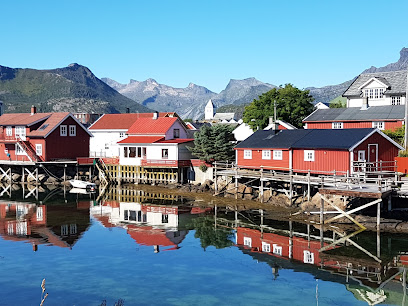
Brygga Restaurant & Bar - Lofoten
Experience authentic Norwegian flavors at Brygga Restaurant & Bar in Kabelvåg - a culinary haven amidst stunning Lofoten scenery.

Karoline Restaurant
Experience authentic Norwegian cuisine at Karoline Restaurant, nestled in the stunning Nusfjord Arctic Resort with breathtaking fjord views.
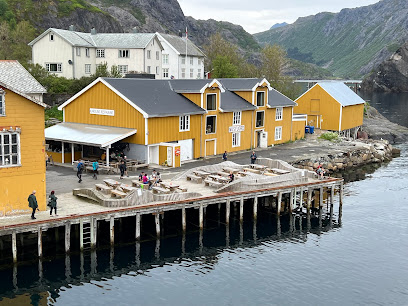
Digg Lofoten • Restaurant & Bar
Experience local Norwegian cuisine at Digg Lofoten in Leknes - where fresh ingredients meet breathtaking views.

Restaurant Gammelbua
Discover exquisite Norwegian cuisine amidst breathtaking fjord views at Restaurant Gammelbua in Reine.
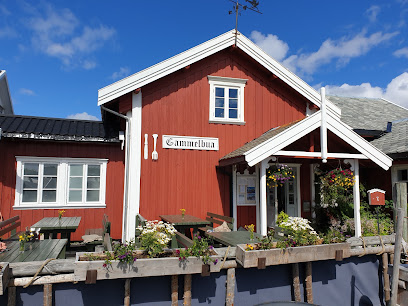
Restaurant Lofotmat
Experience authentic Norwegian cuisine at Restaurant Lofotmat in Henningsvær, where local flavors meet sustainable dining practices.

Brygga Restaurant
Discover authentic Norwegian cuisine at Brygga Restaurant in Å – where local flavors meet stunning landscapes.

Underhuset
Discover Underhuset in Reine for an authentic taste of Norway amidst stunning natural beauty.

Sakura Lofoten Svolvær
Experience exquisite Japanese cuisine blended with fresh local flavors at Sakura Lofoten in Svolvær—where every dish tells a story.

Markets, malls and hidden boutiques
Lofotsenteret
Experience the vibrant shopping culture at Lofotsenteret, the heart of retail therapy in Leknes, Norway, offering a unique blend of local and international stores.

Extra Leknes
Experience the flavors of Norway at Extra Leknes, your go-to grocery store for fresh produce and local delicacies in Leknes.

Joker
Joker in Sørvågen: Your essential grocery stop for local delights amidst Lofoten's breathtaking landscapes.
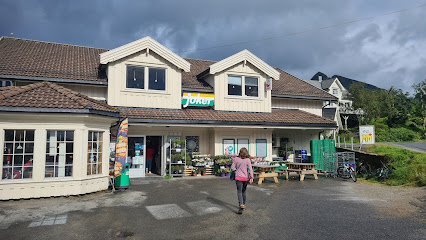
Lofoten Gårdsysteri
Discover the unique flavors of Norway at Lofoten Gårdsysteri, a charming dairy store nestled in the stunning landscapes of the Lofoten Islands.

Gimsøy Landhandel Lofoten AS
Explore a delightful blend of local groceries, homemade meals, and crafting supplies at Gimsøy Landhandel in the heart of Lofoten.

Lofoten Gaver og Brukskunst
Explore Lofoten Gaver og Brukskunst for unique gifts, local crafts, and unforgettable experiences in the stunning Lofoten Islands.

Lofoten Sports And Leisure As
Discover Lofoten Sports and Leisure in Leknes, your ultimate destination for outdoor adventure gear and expert guidance in the breathtaking Lofoten Islands.
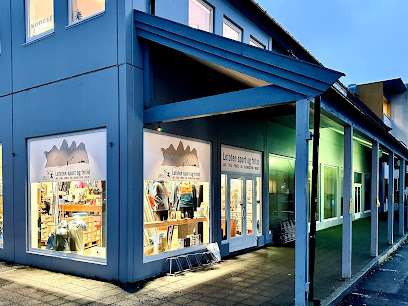
Cubus
Discover stylish and affordable clothing for the whole family at Cubus in Leknes, a top shopping destination in Norway.

Lofotsportbua
Explore the Lofoten Islands with Lofotsportbua: your go-to sporting goods store for outdoor adventures in Reine.

Lofoten Wool / Høystålet
Discover the artistry of Norwegian wool at Lofoten Wool, where craftsmanship meets the breathtaking beauty of the Lofoten islands.

Sport 1 Lofoten
Discover the best sporting goods and adventure gear at Sport 1 Lofoten, your go-to store for outdoor fun in the stunning Lofoten Islands.

The Lofoten Store
Explore the captivating Lofoten Islands through unique souvenirs and essential travel tips at The Lofoten Store.

Butikken på kaia
Discover unique gifts and local craftsmanship at Butikken på kaia, a charming shop in the heart of Sørvågen, Norway.

Ludv. Håkonsen Dame
Explore women's fashion at Ludv. Håkonsen Dame in Leknes, offering stylish beachwear and custom dressmaking for the discerning traveler.

Traktøren Kjøkkenutstyr Lofotsenteret
Explore Traktøren Kjøkkenutstyr in Leknes, Lofoten for unique kitchenware and culinary treasures that inspire your cooking adventures.

Essential bars & hidden hideouts
Magic Ice Lofoten
Experience the magic of art and ice at Magic Ice Lofoten, a stunning gallery and bar in the heart of Svolvær, Norway.

Nordis Restaurant Svolvær
Discover the flavors of Svolvær at Nordis Restaurant, where local ingredients meet culinary creativity in a cozy setting.

Børsen Spiseri
Explore the exquisite flavors of Northern Norwegian cuisine at Børsen Spiseri, a culinary haven in Svolvær.

Anker Brygge
Discover the beauty and flavors of Anker Brygge, a premier bar, restaurant, and hotel in the heart of Svolvær, Lofoten Islands.

Brygga Restaurant & Bar - Lofoten
Experience the flavors of Lofoten at Brygga Restaurant & Bar, where delicious meat dishes meet breathtaking views in the heart of Kabelvåg.
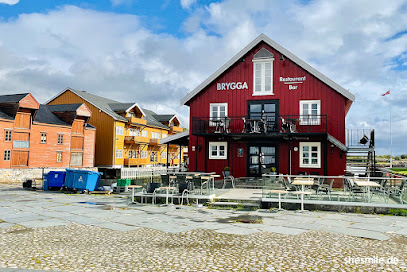
Styrhuset Pub
Discover the heart of Svolvær at Styrhuset Pub, where local brews and vibrant atmosphere meet for an unforgettable experience.
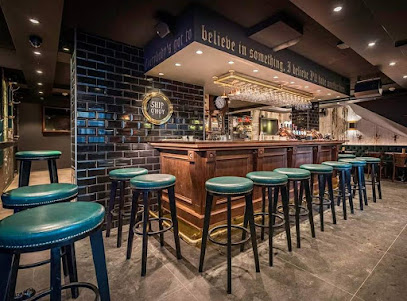
Live Lofoten Restaurant
Experience the best of Norwegian coastal cuisine at Live Lofoten Restaurant in Stamsund, where local flavors meet stunning views.

Lofoten Værøy Brygge
Experience the taste of Norway at Lofoten Værøy Brygge, where fresh, local ingredients meet stunning coastal views in a cozy atmosphere.

Anker Brygge Bryggebaren
Discover Anker Brygge Bryggebaren - a lively seaside pub in Svolvær with stunning views and a vibrant atmosphere for travelers.

Telegrafen pub og bar
Experience the vibrant atmosphere of Telegrafen Pub og Bar, where local culture meets delightful drinks and delicious food in Svolvær.

Lofoten Pub1
Experience the charm of Lofoten Pub in Sørland, where local flavors meet a warm atmosphere, perfect for relaxation and socializing.

Solsiden Lofoten
Experience the culinary delights of Solsiden Lofoten, a bar and restaurant in Ballstad, known for its fresh seafood and pizza takeaway amidst stunning coastal views.

Skjærbrygga & Burekka AS
Discover the delightful fusion of a cozy pub and seafood restaurant at Skjærbrygga & Burekka AS in Stamsund, Lofoten.

Lofotpuben As
Experience the vibrant nightlife of Leknes at Lofotpuben, where local brews and live music create an unforgettable atmosphere.

NORD Bar
Discover the lively atmosphere of NORD Bar in Henningsvær, where great drinks and friendly faces create unforgettable nights.

Local Phrases about Lofoten
-
- HelloHei
[hay] - GoodbyeHa det
[ha deh] - YesJa
[yah] - NoNei
[nay] - Please/You're welcomeVær så god
[ver sa goh] - Thank youTakk
[tahk] - Excuse me/SorryUnnskyld
[oon-shuild] - How are you?Hvordan har du det?
[vohr-dahn har doo deh] - Fine. And you?Bra. Og du?
[bra oh doo] - Do you speak English?Snakker du engelsk?
[snahk-ehr doo eng-ehlsk] - I don't understandJeg forstår ikke
[yeh for-stohr ee-neh]
- HelloHei
-
- I'd like to see the menu, pleaseKan jeg få se menyen, takk
[kahn yeh foh seh meh-nyen tahk] - I don't eat meatJeg spiser ikke kjøtt
[yeh spee-ser ee-keh shyut] - Cheers!Skål!
[skohl] - I would like to pay, pleaseJeg vil gjerne betale, takk
[yeh veel yehr-neh beh-tah-leh tahk]
- I'd like to see the menu, pleaseKan jeg få se menyen, takk
-
- Help!Hjelp!
[yehlp] - Go away!Gå bort!
[go bohrt] - Call the Police!Ring politiet!
[ring poh-lee-tee-eh] - Call a doctor!Ring en lege!
[ring ehn leh-geh] - I'm lostJeg er borte
[yeh ehr bohr-teh] - I'm illJeg er syk
[yeh ehr sook]
- Help!Hjelp!
-
- I'd like to buy...Jeg vil kjøpe...
[yeh veel shoy-peh] - I'm just lookingJeg bare ser
[yeh bah-reh sehr] - How much is it?Hvor mye koster det?
[vohr myeh kohs-tehr deh] - That's too expensiveDet er for dyrt
[deh ehr fohr deert] - Can you lower the price?Kan du senke prisen?
[kahn doo sehn-keh pree-sehn]
- I'd like to buy...Jeg vil kjøpe...
-
- What time is it?Hva er klokka?
[vah ehr kloh-kah] - It's one o'clockKlokka er ett
[kloh-kah ehr eht] - Half past (10)Halv ti
[hahlv tee] - MorningMorgen
[mohr-gehn] - AfternoonEttermiddag
[eh-tehr-meed-dahg] - EveningKveld
[kvehld] - YesterdayI går
[ee gohr] - TodayI dag
[ee dahg] - TomorrowI morgen
[ee mohr-gehn] - 1En
[ehn] - 2To
[too] - 3Tre
[treh] - 4Fire
[fee-reh] - 5Fem
[fehm] - 6Seks
[sehks] - 7Syv
[soov] - 8Åtte
[oh-teh] - 9Ni
[nee] - 10Ti
[tee]
- What time is it?Hva er klokka?
-
- Where's a/the...?Hvor er en/et...?
[vohr ehr ehn/eh...?] - What's the address?Hva er adressen?
[vah ehr ah-drah-ssen] - Can you show me (on the map)?Kan du vise meg (på kartet)?
[kahn doo vee-seh meh (poh kahr-teh)?] - When's the next (bus)?Når går neste (buss)?
[nahr gohr neh-steh (booss)?] - A ticket (to ....)En billett (til ....)
[ehn bee-leht (teel ....)]
- Where's a/the...?Hvor er en/et...?
History of Lofoten
-
Lofoten's history dates back to the Viking Age, around 793 to 1066 AD. The archipelago was a significant center for Viking culture and trade. The Lofotr Viking Museum in Borg showcases the largest known Viking longhouse, reconstructed to reflect the grandeur of the period. Archaeological discoveries indicate that Lofoten was a thriving hub for trade, particularly in stockfish, which was a crucial commodity for the Vikings.
-
During the Middle Ages, Lofoten played an essential role in the trade network of the Hanseatic League, a powerful economic and defensive alliance of merchant guilds. The archipelago's stockfish was highly sought after and traded extensively across Europe. The Hanseatic merchants established trading posts in Lofoten, bringing economic prosperity and cultural exchanges to the region.
-
Cod fishing has been a cornerstone of Lofoten's economy for centuries. The Lofoten fishery is one of the world's largest and oldest cod fisheries, attracting fishermen from across Norway and beyond. The annual Lofoten fishery, known as 'Lofotfisket', peaks between February and April when the Arctic Cod migrate to the archipelago to spawn. The rich fishing traditions are celebrated in local festivals and have deeply influenced the culture and lifestyle of the inhabitants.
-
During World War II, Lofoten was occupied by Nazi Germany. The archipelago's strategic location made it an essential target for both Allied and Axis forces. Notably, the British commando raid known as 'Operation Claymore' took place in 1941, targeting German installations and stockfish drying racks in Lofoten. The raid was successful, and it boosted the morale of the Norwegian resistance movement. Remnants of wartime fortifications and memorials can still be found throughout the islands.
-
After World War II, Lofoten experienced a period of economic growth and modernization. The fishing industry continued to thrive, and advancements in technology and infrastructure improved the quality of life for residents. The introduction of new fishing methods and equipment, along with the development of tourism, brought economic diversification to the region. The picturesque landscapes and rich cultural heritage of Lofoten began to attract visitors from around the world.
-
In recent decades, tourism has become a significant industry in Lofoten. The archipelago's stunning natural beauty, with its dramatic mountains, pristine beaches, and vibrant marine life, has made it a popular destination for outdoor enthusiasts and nature lovers. Activities such as hiking, fishing, kayaking, and Northern Lights viewing have drawn visitors year-round. The local communities have adapted to the influx of tourists, offering a range of accommodations, guided tours, and cultural experiences while striving to preserve the natural environment and traditional way of life.
Lofoten Essentials
-
Lofoten is accessible by multiple means of transportation. The closest airport is Leknes Airport (LKN) and Svolvær Airport (SVJ), both of which have daily flights from Bodø and Oslo. Another option is to fly into Evenes Airport (EVE), which is about a 3-4 hour drive from Lofoten. For those preferring sea travel, the Hurtigruten coastal ferry stops at Stamsund and Svolvær. Alternatively, you can drive from the mainland via the E10 road, which offers stunning scenic views.
-
Lofoten has a variety of transportation options. Car rentals are popular and offer the most flexibility for exploring the archipelago. Public buses operate regularly and connect most of the towns and villages. Bicycling is also a viable option during the warmer months, with many scenic routes available. For shorter distances, taxis are available but can be expensive. Ferries and express boats can be used to travel between islands.
-
The official currency in Norway is the Norwegian Krone (NOK). Credit and debit cards are widely accepted throughout Lofoten, including in hotels, restaurants, and shops. ATMs are available in larger towns like Leknes and Svolvær. It is advisable to carry some cash for smaller establishments and more remote areas where card payment may not be accepted.
-
Lofoten is generally a very safe destination with low crime rates. However, it is always wise to exercise common sense and take standard precautions. There are no specific high-crime areas targeting tourists. Always keep an eye on your belongings, especially in crowded places and during peak tourist seasons.
-
In case of emergency, dial 112 for immediate assistance from police, fire, and medical services. Hospitals and medical clinics are available in larger towns like Leknes and Svolvær. Pharmacies are also available for minor health issues. It is recommended to have travel insurance that covers medical emergencies.
-
Fashion: Do dress in layers and be prepared for sudden changes in weather. Avoid wearing overly flashy or revealing clothing. Religion: Do respect local customs and traditions, especially if visiting churches or religious sites. Public Transport: Do be polite and considerate to fellow passengers. Don’t eat or drink on public transport. Greetings: Do greet people with a friendly 'Hei' (pronounced 'hi'). A handshake is also common. Eating & Drinking: Do try local dishes such as stockfish and cod. Don’t refuse food if offered by locals, as it is considered impolite.
-
To experience Lofoten like a local, consider staying in a traditional fisherman’s cabin, known as a 'rorbu'. Visit local markets for fresh seafood and handmade crafts. Engage with locals, who are often willing to share stories and tips about the area. Don't miss out on participating in outdoor activities like hiking, fishing, and kayaking, which are integral parts of the local lifestyle.
Nearby Cities to Lofoten
-
Things To Do in Tromsø
-
Things To Do in Luleå
-
Things To Do in Trondheim
-
Things To Do in Östersund
-
Things To Do in Rovaniemi
-
Things To Do in Molde
-
Things To Do in Oulu
-
Things To Do in Vaasa
-
Things To Do in Ålesund
-
Things To Do in Jyväskylä
-
Things To Do in Tampere
-
Things To Do in Kuopio
-
Things To Do in Oslo
-
Things To Do in Bergen
-
Things To Do in Uppsala













